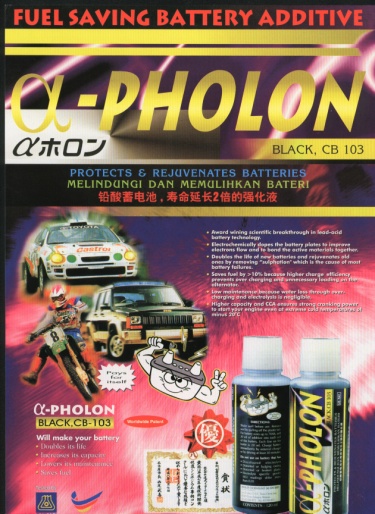Sulfation
Now, lead dioxide is a semi-conductor of electricity, whereas lead sulfate is a non-conductor. Therefore, the recharging process will encounter very high resistance and energy losses. The worse part is when the recharging is not complete and lead sulfate is left to build up. In time, this lead sulfate crystallizes and will not be easily reverted to active materials. This lead sulfate accumulation is called SULFATION and the battery loses its capacity because the active material of lead dioxide is depleted.
|
A-Pholon to the rescue
25973 |
Gassing and water loss
Due to the high internal resistance of a sulfated battery, the charging electric current finds it easier to break up the water molecules in the electrolyte to hydrogen and oxygen gases instead of charging the battery. The sulfated battery gases easily after a short spell of charging; giving the false impression that it is fully charged. Moderate gassing is good as it mixes up the acid but excessive gassing is bad as the active plate materials are scrapped off and lost. Electrolyte spurts out through the caps with the escaping gases and increases the water loss.
Overcharging and energy wastage
In the automobile, the charging is by the alternator, which gets the energy from the engine. The alternator stops charging the battery when it reaches the pre-set cut-off voltage. A sulfated battery does not attain this cut-off voltage and the alternator continues charging the battery unnecessarily. Apart from gassing, this overcharging also heats up the battery and wastes energy. A badly sulfated battery can consume as much as 20% extra fuel.
|

To know more about A-Pholon,
CLICK HERE |

